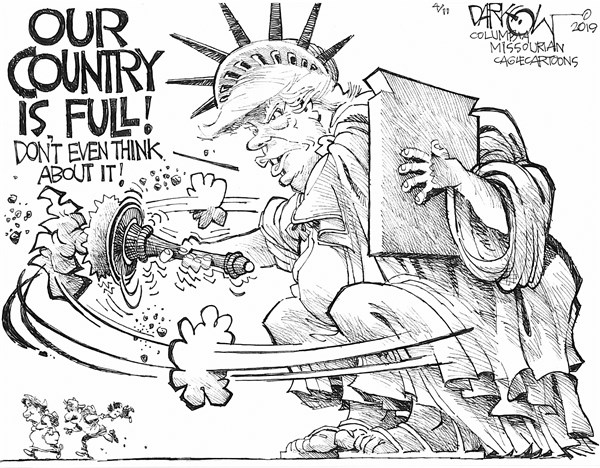Editor’s note: Joe Guzzardi is a Progressives for Immigration Reform analyst who has written about immigration for more than 30 years. Contact him at jguzzardi@pfirdc.org.
 During a recent meeting with the Department of Homeland Security, the State Department, and about 20 other representatives from agencies involved in immigration, the Trump administration floated the idea of zero refugees in 2020.
During a recent meeting with the Department of Homeland Security, the State Department, and about 20 other representatives from agencies involved in immigration, the Trump administration floated the idea of zero refugees in 2020.
Advocates immediately pushed back against the proposal, but the White House insisted that ever-fewer admissions is consistent with National security, and also in line with the downward resettlement trend. In 2017, 53,716 refugees were admitted, and 22,491 in 2018, according to Refugee Processing Center data, with 21,260 refugees admitted through June 30 of this year.
The President determines and approves the refugee cap and announces it prior to the new fiscal year’s start, October 1. That means more than two months for intense partisan wrangling, a period that would be better used now to discuss how refugee resettlement became the most abused Federal program in Washington, D. C. (that’s saying something) and how immediately it needs to be overhauled.
In 2017, the nonpartisan Government Accountability Office issued a report[. It] found that while the State Department and the U. N. High Commissioner for Refugees have worked toward a more effective refugee processing system, much remains undone.
But the unaddressed refugee resettlement question, which applies to all other immigration programs, is how are U. S. citizens affected, specifically their employment prospects? As well, how do these programs impact America’s population growth, already headed to a total of more than 400 million people by 2060?
With refugee resettlement, first, refugees receive immediate work authorization, a good thing for them, since integration into mainstream society is a desirable goal that employment will accelerate. But for an unemployed or displaced American job seeker, more competition represents another hurdle, and many corporations have pledged to hire more refugees.
Second, on population growth, family reunification is a top refugee resettlement priority. Under the UNHCR/USA resettlement program, families are a broad category that includes the spouses, unmarried children under age 21, and the parents of the refugees requesting reunification. Chain migration will eventually allow more family categories like siblings, cousins, and others admission. A Princeton University chain migration study learned that each lawful, permanent resident petitions about 3.45 family members to come to the U. S.
Princeton’s research concluded that chain migration is the biggest immigration driver that leads to higher population.
Whether the refugee resettlement totals are the 110,000 annually that President Obama endorsed or President Trump’s current 30,000 limit, the number represents only an infinitesimal fraction of the world’s estimated 70 million displaced persons. The goal should be to help as many millions as possible, not merely the lucky handful that the UNHCR selects for resettlement.
Toward that end, proposals have been put forward that could help 12 refugees live safely in camps near their home countries for about the same cost as resettling one refugee in the U. S. This approach is called “proximity help.” Oxford University scholars Alexander Betts and Paul Collier refer to it as a way to help refugees help themselves.
Historically, immigration is always about more. Advocates insist that the Nation urgently needs more workers on H-1B high-skilled labor visas, as well as more low-skilled laborers on H-2A and H-2B visas. More employment-based visas are always presented in the best possible light. More welcoming asylum and refugee admission laws are positives, we’re told.
But often, a pause in the status quo is required, to provide time to re-evaluate and improve. U. S. refugee 2020 admissions are unlikely to decline to zero. But taking a more comprehensive look at what the U. S. has done and should do going forward to best assist refugees would be a valuable exercise.
